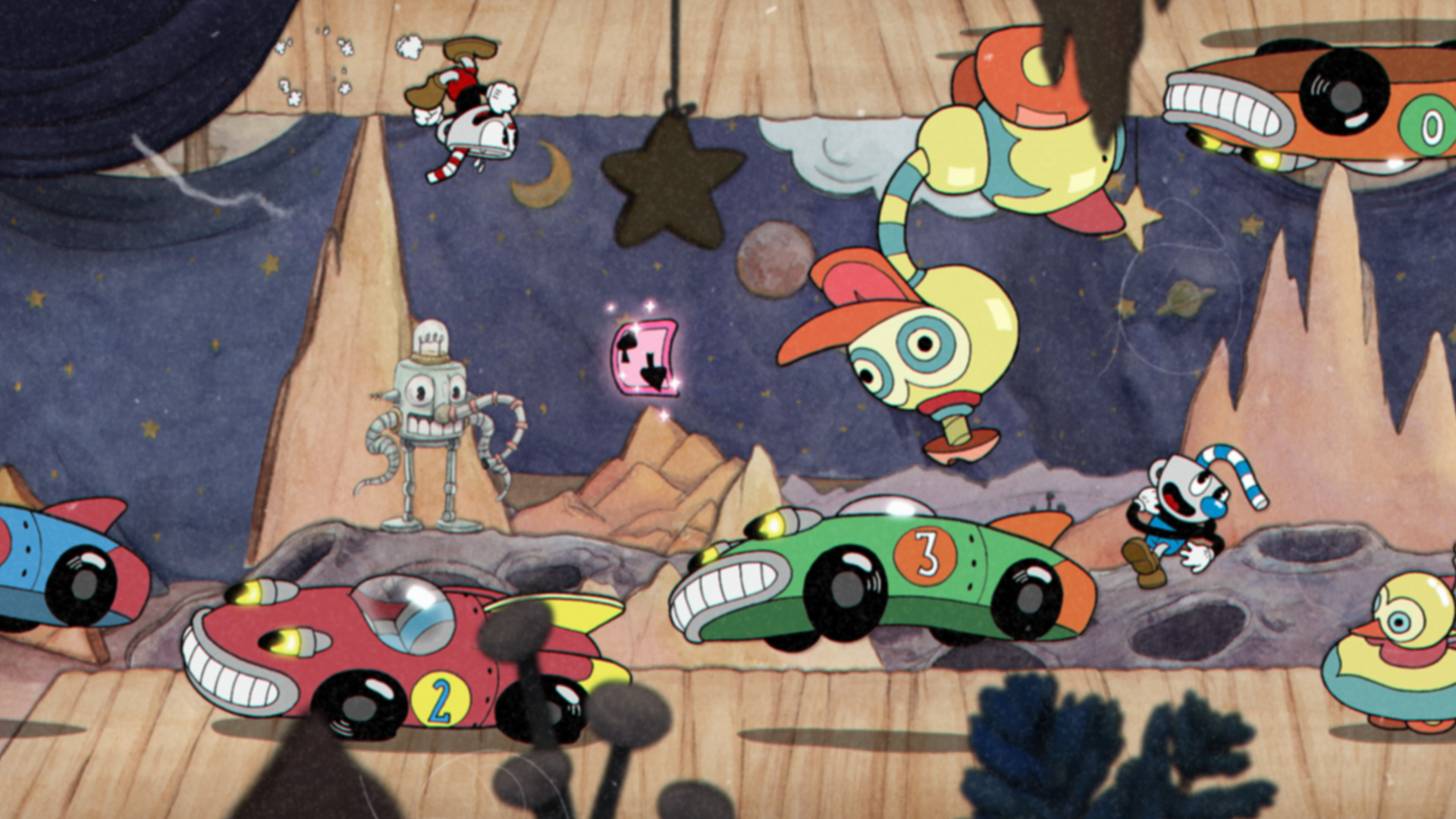To Play ‘Cuphead’ Is to Suck at ‘Cuphead’
Credit to Author: Leif Johnson| Date: Fri, 29 Sep 2017 17:46:27 +0000
Earlier this month, I cringed while watching a YouTube video of Dean Takahashi of GamesBeat as he struggled for almost 30 minutes through the tutorial and opening levels of Cuphead, the new 2D run-and-gun shooter from StudioMDHR. At Gamescom 2017, again and again he failed in the most hilarious and embarrassing ways, leading him to pen a preview beginning with the confession “I suck at Cuphead.” In today’s acidly toxic gaming culture, it was perhaps inevitable that large swaths of the gaming community would take this as an excuse to say the nastiest things about Dean and (for whatever reason) the entirety of his professional colleagues.
But Cuphead‘s out now, and we can all now laugh at how easy it is, right? Hold that thought. I’m here to say that we should have taken Dean’s fumbles as a warning. We are all Dean now.
Okay, okay, truth is, I didn’t have nearly as rough of a time. Frankly, I came close to beating it within a day. Yet it’s certainly true that it took me more than six tries to get through the same level that plagued him, which takes place on a forest floor while you run to the right while shooting constantly much in the style of Konami’s 1987 hit Contra. All those deaths, and that level technically only exists so you can collect coins to buy interchangeable items that help you defeat Cuphead‘s many bosses.

Bosses are the real focus of the game. Cuphead is a game in which boss fights are a religion; where the frantic dance of dodging and leaping over projectiles and firing peas at angry carrots triggers a trance akin to meditation. And make no mistake, it’s hard to walk the path of the faithful. Persist, though, and you’ll overcome. Beat enough bosses, and you’ll often feel as though you’ve inched closer to divinity yourself. Cuphead isn’t a game that wants to be hard for the sake of being hard; it’s a game that teaches you to both learn patterns and think creatively to overcome challenges.
And what does “hard” mean for Cuphead? Hard is literally dozens of bosses, with no checkpoints for failures and only a measly bundle of three hit points to see you through each boss. Once they’re gone, they’re gone. Each boss fights requires you to survive through at least three phases, and if you fail? Too bad. Back to the start. Try again. The bosses themselves are screen-hogging menaces that may warp from a duo of boxing frogs that pumps out energy balls from their gloves and into huge slot machines that spit out coins and spiked spinning disks.
It’s rare to see this kind of screw-up-one-and-die difficulty in today’s games, but Cuphead shows concept can still thrive. More importantly, it shows it can still be fun. It’s tough but satisfying in part because it’s never unfair. Attack patterns give the madness method, the brief two-or-three minutes lengths for each fight keep retries from being a pain, and a porcine merchant sells inexpensive skills that give you an edge over a specific boss’ attack patterns.
Yet Cuphead understands that we gladly suffered through sadistic games like Contra and Battletoads years ago because they just looked so damned cool. That’s true here, too, and even more so. Nostalgia sometimes feels like the great cultural disease for our age, but few works of popular culture use it to such great effect as Cuphead.
You can find elements of that attitudes Cuphead‘s approach to tough 2D-shooter boss fights, which only make you redo the boss fight rather than the entire game if you fail. It extends to the breathtakingly fantastic 1930s art style, which captures the surrealism and trembling energy of Fleischer Studios’ cartoons without the current of casual racism seen in their original shorts for Betty Boop and Popeye the Sailor. As a whole, it’s a throwback to a time when games were usually content to be little more than games.
Now that I’m done with it, I can’t help but think of how the it reminds me of how I hear members of the living history-focused Society for Creative Anachronism’s describe the peculiar way they celebrate the Middle Ages and justify their penchant for beating each other with rattan sticks: “It’s the past as it should have been.”